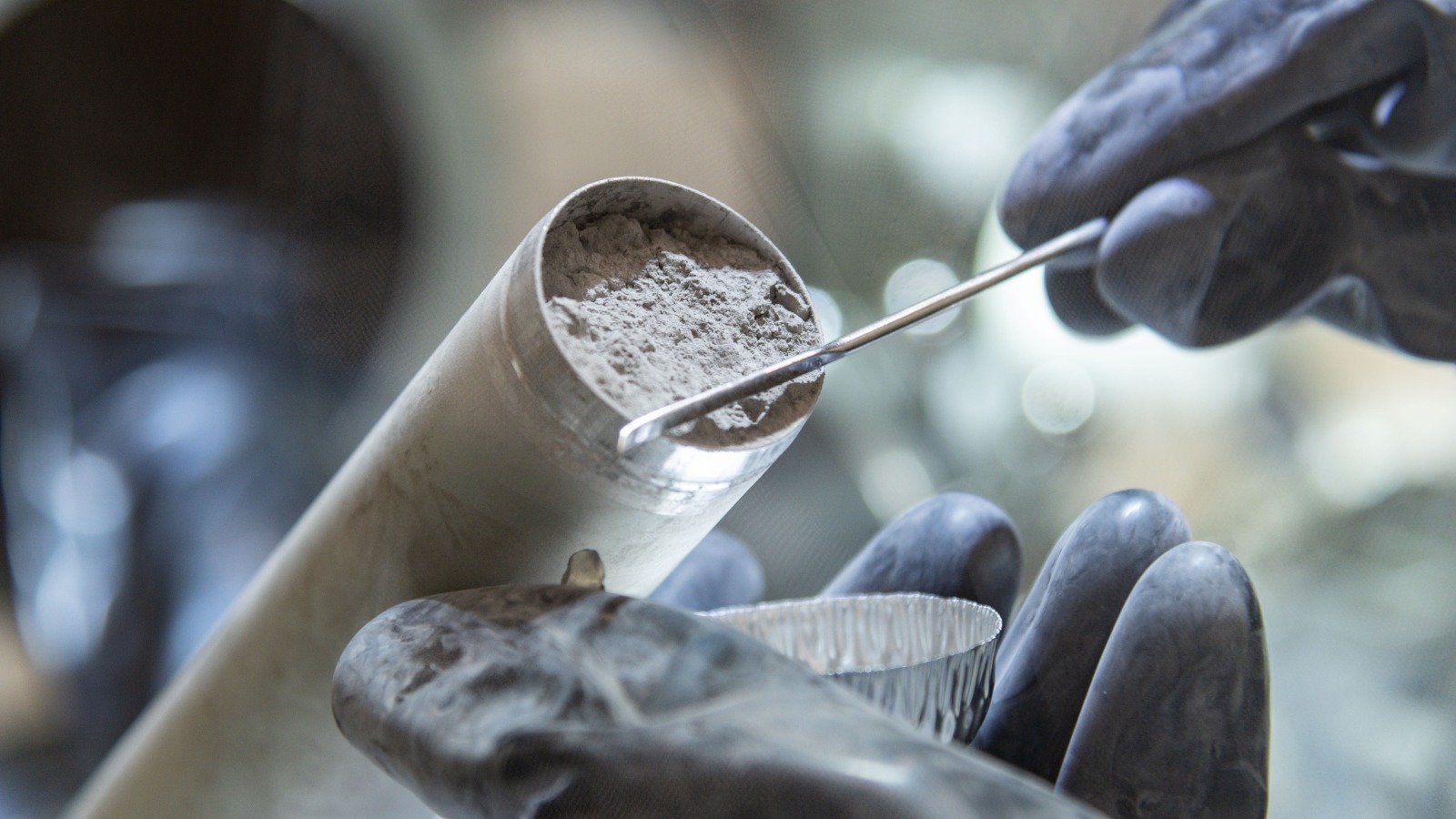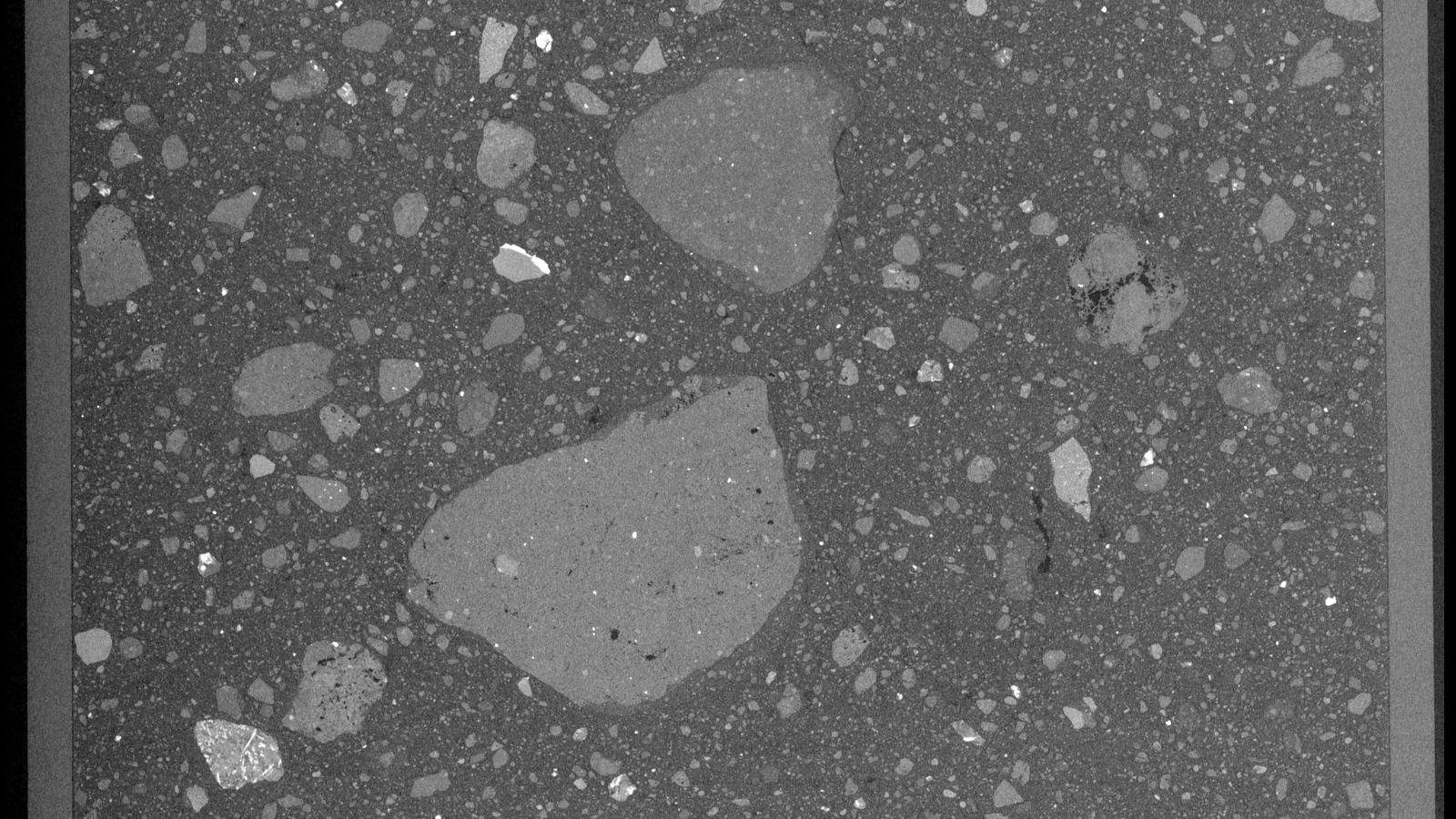NASA finally opened 50-year-old Apollo moon rock sample as agency eyes human return to lunar surface
'It's just the best thing in the world — like a kid in the candy store.'

NASA scientists have unsealed an extraterrestrial time capsule 50 years after astronauts collected the rock and dust from the moon and sealed it away before returning to Earth.
The precious sample from Apollo 17 is one of the last pristine remaining bits of the moon. NASA scientists cracked the seal in a slow process executed on March 21 and 22. The move came on the eve of NASA's first uncrewed launch of the Artemis program to return humans to the moon; Artemis 1 is scheduled to launch no earlier than May.
Before the big moment, deputy Apollo sample curator Juliane Gross did dry runs of the difficult process with mock-up rocks at NASA's Johnson Space Center in Houston, where the lunar sample is housed. The process left Gross with sore arms and shoulders, in an exacting process that she likened to putting together furniture. But she said in a NASA statement Wednesday (March 23) that the workout was worth the pain.
"We are the first people who got to actually see this soil for the first time," Gross said. "It's just the best thing in the world — like a kid in the candy store, right?"
Related: NASA's Artemis 1 moon mission explained in photos
The sample was stored inside a special tube sealed in the moon's vacuum in 1972, requiring Gross to use specialized tools and a good sense of organization to keep track of all the pieces.
“We did this step by step, trying not to lose all the tiny pieces and screws,” Gross said.
Breaking space news, the latest updates on rocket launches, skywatching events and more!
But at last, the sample that astronauts Eugene Cernan and Harrison Schmitt (also a geologist) collected in the Taurus-Littrow Valley within Mare Serenitatis was open for analysis. Scientists hope this sample will help with preparation of the Artemis moon program, which plans to land astronauts on the moon later in the 2020s.
Apollo 17 core sample 73001 was held aside as part of the agency's Apollo Next Generation Sample Analysis Program. In the 1970s, NASA recognized that technologies of the future would be able to unveil fresh information about our lunar neighbor, so the agency saved a portion of the rocks for future scientists to analyze.
One big pivot from the science of nearly two generations ago was the definitive confirmation of water on the moon's surface in 2008, using observations gathered by a NASA instrument aboard the Indian Chandrayaan-1 spacecraft. The Artemis missions focus on the lunar south pole, where subsurface water ice appears to be particularly plentiful; would-be explorers hope to use it to meet needs for water and oxygen on the moon.
The fresh sample, 73001, is the lower half of a core sample. The upper half, dubbed 73002, was returned from the moon inside a normal, unsealed container and was opened in 2019. (That year marked the 50th anniversary year of the first crewed moon landing, Apollo 11, on July 20, 1969.)
"The ANGSA science team has been studying its layers of small rocks and soil," NASA said in a statement of the sample opened in 2019, "and is eager to see what the lower half holds."
As the team gets ready to peer into the new sample, analysis is ongoing on a gas sample procedure that technicians did a few weeks ago. The hope is the gas sample, along with the newly opened core, will provide more details in preparing for the Artemis program.
"We have an opportunity to address some really important questions about the moon by learning from what has been recorded and preserved in the regolith of these Apollo samples," Francis McCubbin, NASA astromaterials curator, said in the same statement.
"We curated these samples for the long term, so that scientists 50 years in the future could analyze them. Through Artemis, we hope to offer the same possibilities for a new generation of scientists."
Follow Elizabeth Howell on Twitter @howellspace. Follow us on Twitter @Spacedotcom and on Facebook.

Elizabeth Howell (she/her), Ph.D., was a staff writer in the spaceflight channel between 2022 and 2024 specializing in Canadian space news. She was contributing writer for Space.com for 10 years from 2012 to 2024. Elizabeth's reporting includes multiple exclusives with the White House, leading world coverage about a lost-and-found space tomato on the International Space Station, witnessing five human spaceflight launches on two continents, flying parabolic, working inside a spacesuit, and participating in a simulated Mars mission. Her latest book, "Why Am I Taller?" (ECW Press, 2022) is co-written with astronaut Dave Williams.



